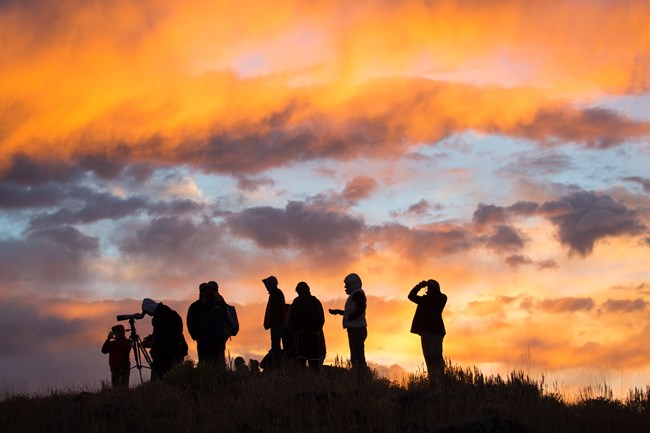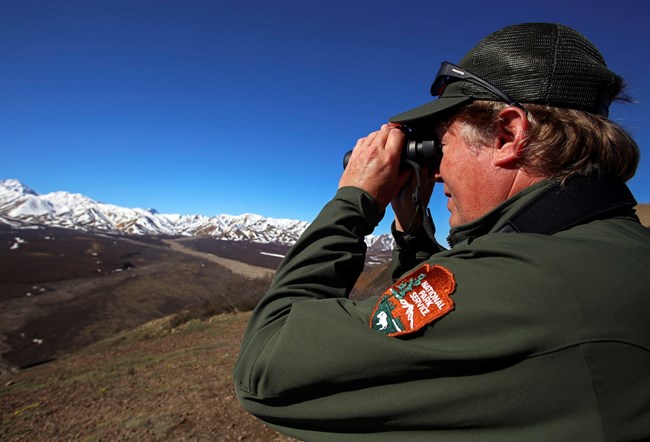Last updated: February 16, 2023
Article
Why Monitor Birds?
Birds are an integral part of our world. Whether you live in an urban area or in the middle of the wilderness, chances are you hear or see birds daily. We are drawn to birds for their intrinsic beauty—From their vibrant songs that bring music into our lives, to the feeling of wonder and awe in watching a hawk soar on thermals.

Carey Chisholm
We also need birds. They support habitats and food crops through pollinating, eating destructive pests, and dispersing seeds. They serve as ecosystem engineers, constructing structures (like nests and tree holes) that are used by other organisms when abandoned by the birds. They also boost local economies through the multi-billion-dollar birdwatching industry.
While watching birds can deepen our connection to nature and our community, it can also help scientists conserve birds—if you share what you see. With over 10,000 species of birds worldwide – many of which travel vast distances between the seasons, keeping track of bird populations is a monumental task for scientists, so they need your help!
Community Science is for the Birds!

NPS / Neal Herbert
If enough people watch birds in their backyards, communities, or wild places, they can provide a “snapshot” of bird populations. These “snapshots” can be compared with data from previous years to see what’s happening with global bird populations. Are they increasing or decreasing? Does a species’ range seem to be expanding, shrinking, or shifting? Noticing changes in these “snapshots” can alert scientists to potential problems that warrant more investigation.
That’s where the Great Backyard Bird Count comes in. This annual four-day global bird count encourages bird enthusiasts of all ages and abilities to observe birds and share what they see or hear. With modern technology and services like eBird, results from the count are displayed in almost real time. In 2022, over 7,000 species were identified by an estimated 384,000+ participants! 2023 promises to be another big year for the Great Backyard Bird Count as it celebrates 26 years of bringing people together for the love of birds.
The opportunity to participate in community science around birds doesn’t stop with the Great Backyard Bird Count. You could join other yearly events like the Audubon Christmas Bird Count. You could even participate every single day if you wanted with extended counts like eBird, Project FeederWatch. These opportunities are not just for wild spaces, there’s an entire project devoted to urban birding as well!
Monitoring in Parks—and Beyond

NPS Photo
For some scientists in the National Park Service, monitoring species is a full-time job. There are 32 Inventory and Monitoring networks across the country that gather and analyze information on plants, animals, and ecosystems. They use this information to help indicate the over health of parks. Since birds respond quickly to changes in their environments, they make good indicators of the conditions of their ecosystems.
By monitoring bird populations in parks over long periods of time, scientists can detect trends. Noticing these trends can help park managers make informed decisions on how to preserve and protect the ecosystems within park boundaries. When resource managers at Pea Ridge Military Park saw a decline in bobwhite quail populations, they began focusing their efforts on grassland restoration to provide better habitat for the bird.
However, nature knows no boundaries, especially when it comes to highly mobile birds—some of which migrate thousands of miles every year. In order to get the full picture, scientists must look beyond park boundaries.
A recent study showcases how citizen science and regional monitoring programs can work together to help answer questions about protecting birds. To help determine the benefits of protected lands in conserving wild bird species, researchers compared data from protected lands and data from a citizen science project monitoring birds in unprotected areas. Some of the results from this study were quite surprising and show just how important the long-term monitoring of birds is—especially as climates continue to change.

NPS / Emily Mesner
Beyond Binoculars
Advancements in technology help scientists monitor birds, especially across long distances and in remote areas. One way scientists reach beyond park boundaries is through attaching electronic tracking devices, or tags, to birds. Tags are particularly important when monitoring migratory birds. By looking into where birds go when they migrate and what routes they use to get there, scientists are better prepared to protect them. See how tagging technology is used to study migratory birds in Alaska.
The National Park Service is also joining a worldwide collaborative research network, Motus Wildlife Tracking System, that uses radio telementry to study the movement of small animals. In 2022, the first National Park Service Motus station was installed in Fort Union National Monument to help track declining grassland birds.
National Park Service scientists are also using artificial intelligence to help answer complex, pressing questions about birds. BirdNET helps detect over 3,000 bird species on audio recordings. It is currently being used in a variety of national parks to help answer questions about restoration success, climate change, and more.
Putting it All Together
Sometimes the results from long-term monitoring are not always what we hoped. A 2019 study of long-term bird population monitoring showed that 2.9 billion birds in North America have been lost since 1970. That’s 1 in 4 birds! While those results are staggering, now that we know that this is happening, we can do something about it. With this knowledge, agencies and organizations can better focus their conservation efforts. You can even help conserve birds from home by following these 7 Simple Actions to Help Birds. Spoiler alert: Number 7 may sound familiar... Watch birds and share what you see.
